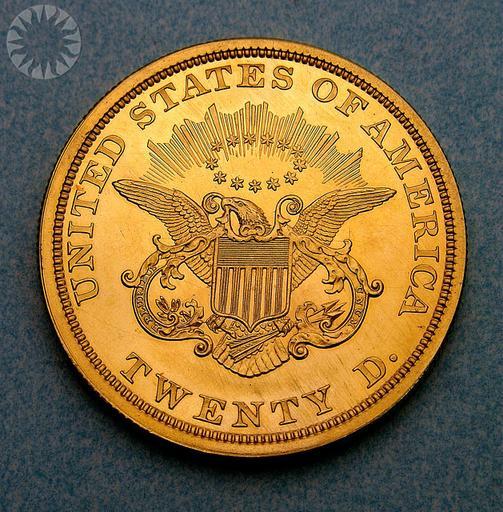MAKE A MEME
View Large Image

| View Original: | United_States,_20_Dollars,_1849_(pattern).jpg (629x640) | |||
| Download: | Original | Medium | Small | Thumb |
| Courtesy of: | www.flickr.com | More Like This | ||
| Keywords: legendary coins legendarycoins numismatics money smithsonian probably public domain probablypublicdomain round circle indoor plate ancient ceramic text SI Neg. 2005-27335. Date: 9/1/2005...The California gold rush quickly gave the United States not one new gold coin, but two: a tiny gold dollar at the lower end of the monetary spectrum, and a large double eagle, or twenty-dollar coin, at the upper end. Why did Americans need more gold denominations? .So much gold was now coming out of California that it was actually lowering the value of that metal against silver. Bullion dealers began buying up silver dollars and half dollars for melting and export, for they were now worth more than face value as bullion. A Congressman from North Carolina had an idea: If gold dollars were struck, to pass at par with the silver ones, it might ease some of the pressure on silver coinage. .His bill was introduced late in January 1849. At the last minute, a provision was added for an entirely new coin, a double eagle. Thus amended, the bill became law on March 3, 1849. The production of gold dollars swung into action fairly quickly, and coinage had gotten under way by early May. .But the double eagles took longer. James B. Longacre, the artist selected to design the new large coin, encountered initial opposition from Mint Officials, and it was late December before the first two pattern double eagles could be struck. One disappeared long ago, leaving this as the only surviving gold pattern from 1849..Click here to view the reverse...Credit: Tom Mulvaney (Smithsonian Institution) SI Neg. 2005-27335. Date: 9/1/2005...The California gold rush quickly gave the United States not one new gold coin, but two: a tiny gold dollar at the lower end of the monetary spectrum, and a large double eagle, or twenty-dollar coin, at the upper end. Why did Americans need more gold denominations? .So much gold was now coming out of California that it was actually lowering the value of that metal against silver. Bullion dealers began buying up silver dollars and half dollars for melting and export, for they were now worth more than face value as bullion. A Congressman from North Carolina had an idea: If gold dollars were struck, to pass at par with the silver ones, it might ease some of the pressure on silver coinage. .His bill was introduced late in January 1849. At the last minute, a provision was added for an entirely new coin, a double eagle. Thus amended, the bill became law on March 3, 1849. The production of gold dollars swung into action fairly quickly, and coinage had gotten under way by early May. .But the double eagles took longer. James B. Longacre, the artist selected to design the new large coin, encountered initial opposition from Mint Officials, and it was late December before the first two pattern double eagles could be struck. One disappeared long ago, leaving this as the only surviving gold pattern from 1849..Click here to view the reverse...Credit: Tom Mulvaney (Smithsonian Institution) | ||||